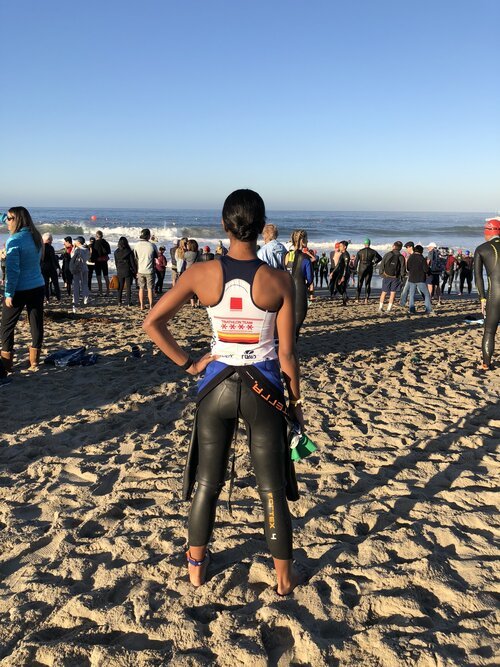BLOG
Neurosweat

Building resilience through movement
The good news is that resilience is not a trait that you either have or you don’t. It’s a mental skill that can be strengthened through practice and over time. Let’s look at the resilient brain and then explore how it can be fortified by doing something that most of us love - moving.

A love letter to movement
I remember the early days.
Riding a tricycle around the black top at my preschool by the sea.
Doing the Mexican Hat Dance with my first dance teacher and my toddler brother chasing me.
Taking my first ballet class at 8 and performing in more Nutcrackers than I can remember.
Crushing the competition in the 4x100 relay at my elementary school’s Olympic Day.
The freedom.
The joy.

How to rewire your brain to focus on the good
Fact: We pay more attention to negative elements in our environment than positive ones. There’s a good reason for this. The negativity bias evolved to help us survive in harsh conditions. Unfortunately, in today’s world, our overemphasis and heightened focus on negative elements is detrimental to our health. The good news is we can take advantage of neuroplasticity and rewire our brain.

Feel into your “why” to stay motivated
Articulating your why is necessary for maintaining steadfast motivation and for getting through the tough days (or seasons). Purpose is directly correlated with drive. And drive, as we know, is directly correlated with success - however you define that. . . You have been forced to step back from your sport in one way or another - and with that separation comes the opportunity for clarity. Why do you do what you do?

Show up anyway: A request during this pandemic
Feel all the feels and show up anyway. That’s resilience . . . Every single one of us has something to offer. It may not be a colossal sacrifice, it may not be a grand philanthropic gesture, and it certainly doesn’t have to be perfect. But, you have something to offer and that’s what the world needs right now. Whether you’re carrying a torch on the front lines of this pandemic, or you’re holding a single match that only illuminates the space around you, your light is needed.

What are you afraid of?
We are all afraid of something. There are the common fears of snakes, public speaking, and bad guys. Then there are the deeper fears - failure, loss, and death.
What does fear feel like? And where do you feel it in your body? These are important questions to ask yourself when fear arises. It is also important to recognize that fear is the ego’s way of protecting us. However, the ego is sensitive, and much of the fear responses we experience are unnecessary.

Mental agility: A key ingredient for mental toughness
Change is tough. When you have a concrete plan, or even a rough idea of how something should unfold, you may perceive obstacles as a threat - and buckle under the pressure.
One characteristic of a mentally tough person is their ability to recognize challenges as neutral, make the necessary adjustments in a timely manner, and get back in the game. Instead of letting the stress consume them, they demonstrate resilience - leaning in to the change, making shifts, and moving on.
So, how do you do that?

Align + Allow: An intention for 2019
What if 2019 can be an experiment in flowing more and forcing less? And what if the practice of flow could allow you to access deeper fulfillment, and maybe even open you up to more enriching opportunities?
In this new year, focus on the exhale, surrender more fully, and give yourself permission to align with that which feels easy.

The science of breath: Nadi Shodhana
The breath is the link between our mind and our body; between ourselves and this world. It is the root of consciousness.
And yet, we hardly pay it any mind.

Feel all the feels
Yes, anxiety is uncomfortable. Yes, grief is uncomfortable. Yes, fear is uncomfortable. But these emotions help us create an internal map of the world if we give ourselves the time and space to lean into them, breathe into them, and release them so we can propel forward.

Neuroscience wearables: Do they actually enhance performance?
It has been argued that human athletic ability has plateaued, but that technology is pushing out the boundaries created by physiological limits. We’ve seen swimsuits move better through water, bikes become more aerodynamic, and running shoes get lighter. Now, neuroscience is getting in the game with the introduction of brain-boosting technology. In this article, I’ll discuss neuropriming and neurofeedback devices and offer my thoughts on whether or not the price tag is worth it.

Predicting the best of the best: Kona edition!
Triathlon performance is difficult to predict. But, as the 2018 World Championship is nearly here, science may help us make our picks.

Know pain: understanding the neural underpinnings of pain in endurance sports
Your mindset can affect how you perceive pain. For a long time, psychologists theorized that mental techniques such as visualization, positive self-talk, or cognitive self-regulation, could alter one’s experience of pain. Recently, neuroscientists discovered neural pathways that may help explain how shifts in mindset contribute to our experience of pain.

6 concussion myths debunked
March is Brain Injury Awareness Month, so let’s close it out by dispelling 6 big concussion myths.

Your brain on March Madness
Last weekend was arguably the best sports weekend of the year. It was the start of March Madness. 48 games were played between Thursday and Sunday and for the first time in history, a #16 seed (UMBC) beat a #1 seed (Virginia).
March madness offers exactly 63 opportunities to be wowed and to root for the underdog. There are blowouts, overtime wins, and upsets. And at the end, there’s the most moving video montage in all of sports. Cue: “one shining moment”. If you’re a sports fan, what’s not to love?

5 science-backed ways to jumpstart your day after daylight savings
Monday mornings are tough.
Monday morning after Daylight Savings Time begins is brutal.
Your morning sets the tone for your entire day. If you approach it intentionally, you’re on your way to a more productive and fulfilling day. Here’s a list of 5 actions to take to help jump start your mind and body for the day.

The negative effects of negative thinking
We all have a voice inside of us - and sometimes that voice is incessant. Unfortunately, it can be quite negative at times too, and negative thinking is detrimental. Let’s explore why.

Create space . . . to create
Do you ever feel like you need space? Space to grow, space to think, and space to create? There’s a reason why so many artists and writers escape the city to find quiet when they embark upon a new project. They’re finding a peaceful environment in which they can carve out space in their mind for creative thoughts. There’s something to that, but you don’t necessarily have to go on a solo retreat in the woods to find that space.

Hey, Warrior. What are you fighting for?
In the past week, we’ve seen warriors in the form of Emma Gonzalez and her classmates - survivors of yet another school shooting - speaking out about gun control. We’ve seen Olympians competing for a medal they’ve trained their entire careers for. And if you’ve looked in the mirror recently, you’ve seen a warrior there too.

Oh, hi! Welcome.
Oh, hi! Welcome.
